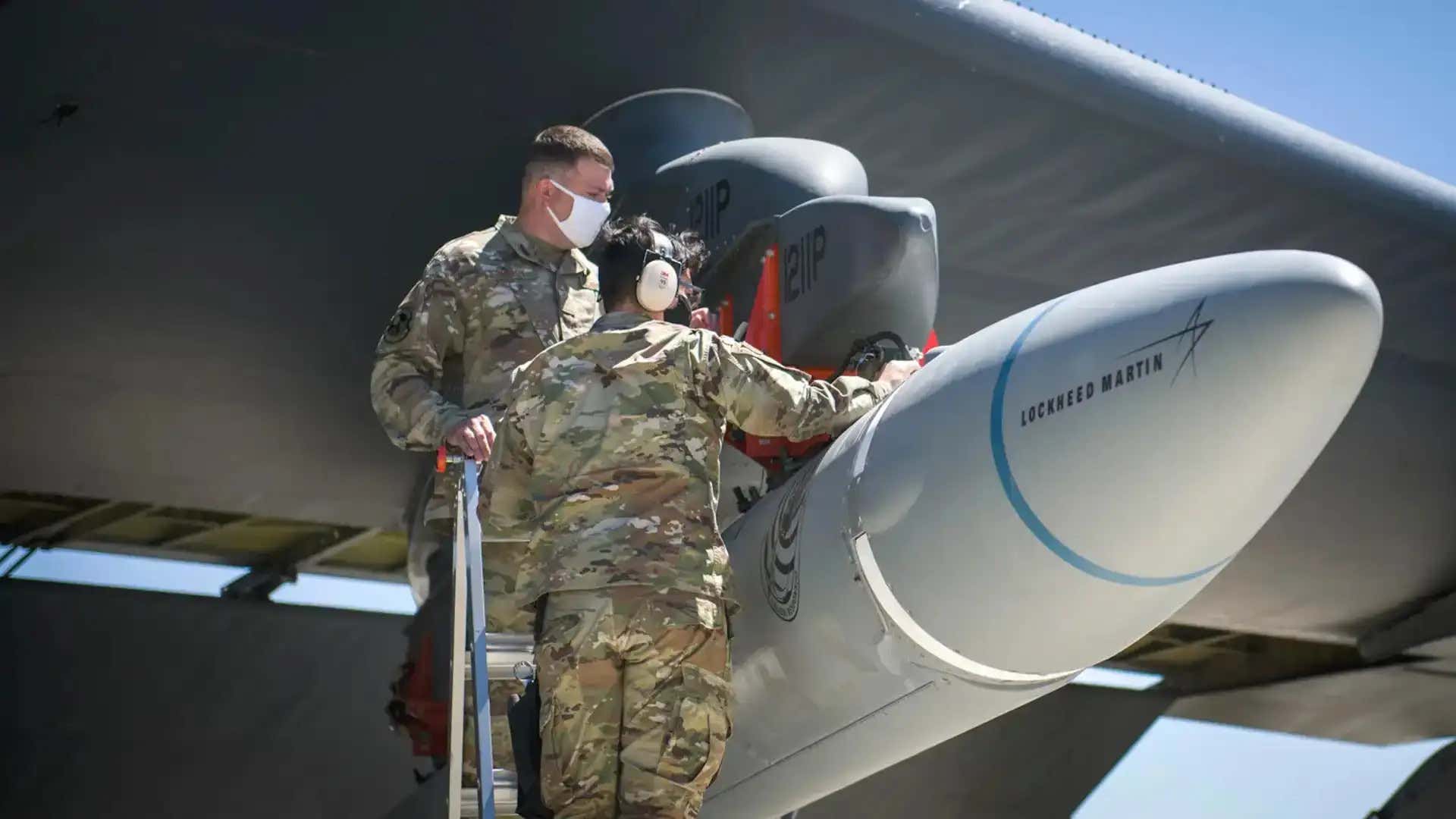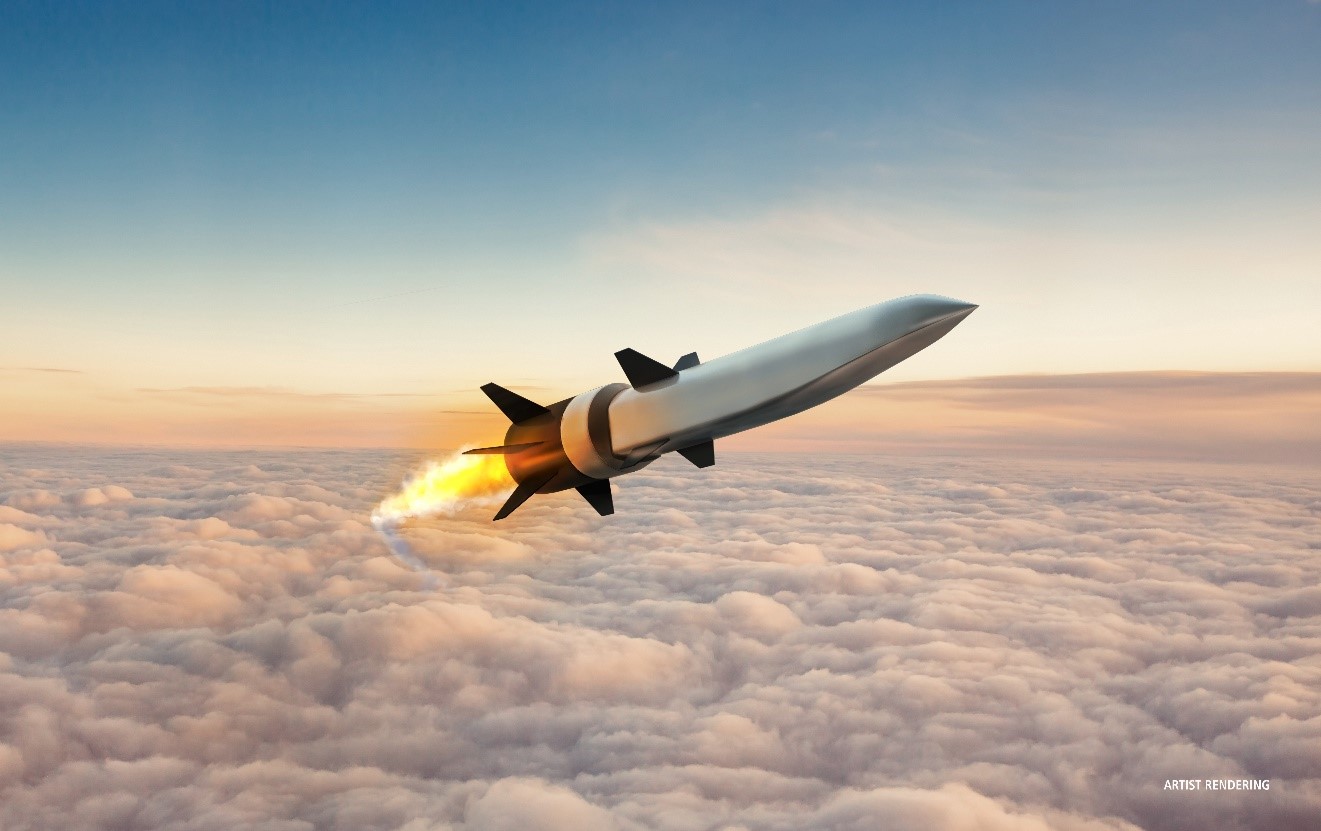The world is currently witnessing a hypersonic arms race where the US is clearly lagging behind. It has now stepped up research and development in the domain of hypersonic missiles to catch up with its rivals Russia and China.
China Ends Western Monopoly In Aircraft Technology; Powers Its J-20 Stealth Fighter Jets With Indigenous WS-10C Engine
After two attempted flight tests of the Air-launched Rapid Response Weapon (ARRW) ended in disappointment, the US has finally managed to test a top-secret missile successfully.
Early in April this year, the US Air Force had conducted the first live-fire flight test of a prototype AGM-183A ARRW hypersonic missile. Reportedly, there was an issue with the aircraft, a B-52H bomber, and it did not launch the weapon.
The test missile was unable to finish its launch sequence and was safely retained on the aircraft, that returned to the Edwards Air Force Base in California.

A second attempt to carry out the test using the ARRW took place in July. In a major setback, the second attempt also proved to be a dud. This time, the missile was able to successfully separate from the B-52H bomber but the rocket engine did not ignite.
The ARRW is designed to let it use its rocket booster to accelerate a wedge-shaped unpowered hypersonic boost-glide vehicle placed inside the nosecone on top of the missile.
India’s ‘White Elephant’: Why Is Indian Army Acquiring Bulky Arjun Tanks To Battle China In High-Altitude Ladakh?
The nosecone would give it the desired altitude and speed, then break away from the missile. After this, the vehicle is released, and it glides along the flight trajectory towards its target at hypersonic speed.
The Big Success
After these two setbacks, the USAF grabbed a victory last week with the Hypersonic Air-breathing Weapon Concept (HAWC) vehicle. The vehicle is developed under a partnership of the USAF and the Defense Advanced Research Projects Agency (DARPA) and is built by Raytheon Technologies with a hypersonic engine made by Northrop Grumman.
The exploration of air-breathing hypersonic flight is happening simultaneously with the AGM-183A.
The Air Force Magazine quoted a DARPA spokesman as saying that the HAWC made a free-flight earlier this month. The vehicle flew faster than Mach 5 speed (five times the speed of sound), but DARPA refused to divulge how long it flew, though.
P-8 Poseidon: Indian Navy Bets Big On Boeing’s Maritime Recon Aircraft To Puncture China’s Swelling Military
DARPA and USAF also declined to identify which aircraft the vehicle was launched from. They did report that the engine “kicked on” moments after being released from the aircraft.
“Primary” goals of the test flight, including “vehicle integration and release sequence, safe separation from the launch aircraft, booster ignition and boost, booster separation and engine ignition, and cruise”, were achieved.

The Air Force plans to pursue the ARRW for its initial hypersonic attack capability, while the Hypersonic Attack Cruise Missile (HACM) is for future hypersonic attack capability. The HACM is capable of using ambient air for oxidizer, removing the reliance on the boost effects of a missile.
This is expected to give it a longer range than the ARRW. The HACM will be smaller compared to the ARRW that is currently carried on the B-52. HACM’s smaller size will allow it to be carried on fighter-sized aircraft.
The Hypersonic Race
Russia, which has been researching hypersonic weapons for several decades, boasts three deadly weapons — Avangard, Tsirkon or Zircon, and Kinzhal.
Their development picked up pace after the US withdrew from the Anti-Ballistic Missile Treaty in 2001. Russian President Vladimir Putin termed these weapons – “invincible”.
On July 19, the Russian Admiral Gorshkov frigate had successfully test-fired the Tsirkon (Zircon) hypersonic missile against a surface target at the range of over 350 km and the flight speed reached 7 Mach.
There were reports last year saying Russian fifth-generation Sukhoi Su-57 was spotted carrying a prototype of the Kinzhal (dagger in Russian).
#VIDEO #RusMoD issues footage of launching #Avangard #missile with hypersonic glider from the Dombarovsky region to engage a target at Kura training ground in #Kamchatka https://t.co/tDfBtMpSpL #Trials #Missiles pic.twitter.com/T8tQx3hd1o
— Минобороны России (@mod_russia) December 26, 2018
Meanwhile, China has already extensively tested its medium-range ballistic missile that is designed specifically to carry hypersonic glide vehicles (HGVs)- the Dong Feng-17 (DF-17).
Moreover, Beijing has the Dong Feng-ZF (DF-ZF), which has also been specially designed for the same purpose as the DF-17. China has one more hypersonic weapon- the Xing Kong-2, that is likely to be ready by mid-2020.

Is the US Left Behind?
The US has several hypersonic weapons programs that are currently under development. According to a recent Congressional report cited by National Interest, these weapons include the US Navy’s Conventional Prompt Strike (CPS); the USAF’s AGM-183 Air-Launched Rapid Response Weapon (ARRW) and Hypersonic Attack Cruise Missile (HACM); the US Army’s Long-Range Hypersonic Weapon (LRHW); and DARPA’s Tactical Boost Glide (TBG), Operational Fires (OpFires), and Hypersonic Air-breathing Weapon Concept (HAWC).
Why Is India Upgrading Its Air Force With Older MiG-29, Mirage 2000 Fighter Jets As It Looks To Battle China?
The US started seeking hypersonic missile capabilities late and is still in the initial stages of testing. The Government Accountability Office (GAO) has urged the Pentagon to revise the hypersonic weapons programs, highlighting that the current system could potentially hamper the research.
The GAO suggested that the Department of Defense leadership reform the structure of its hypersonic research.
“[W]ithout clear leadership roles, responsibilities, and authorities, DOD is at risk of impeding its progress toward delivering hypersonic weapon capabilities and opening up the potential for conflict and wasted resources as decisions over larger investments are made in the future,” a GAO report read.
- Written by Shreya Mundhra/EurAsian Times Desk
- Follow EurAsian Times on Google News




